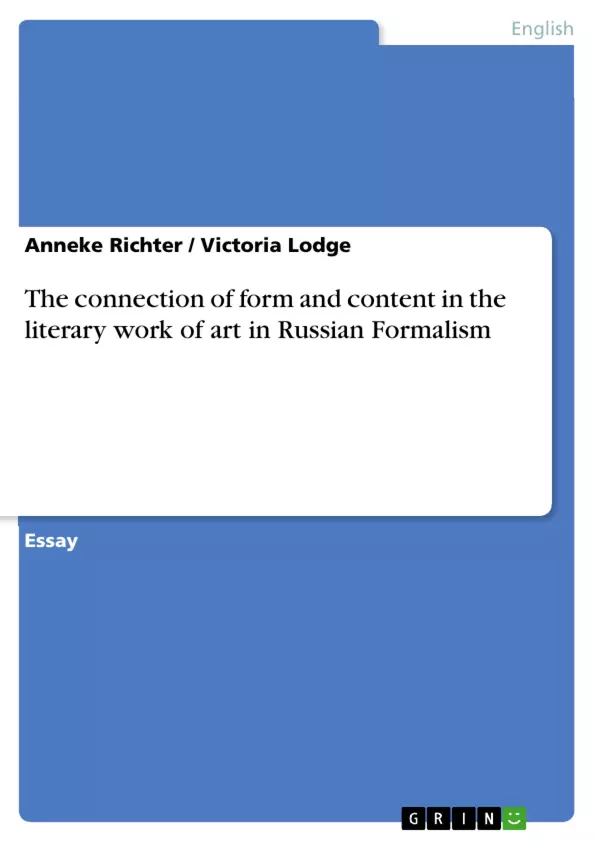Redirecting attention from the author to the foregrounding of language itself, the supporters of Russian Formalism, which began to blossom at the beginning of the 20th century, stressed their concern with the literariness of literature and found a different approach to the ontogeny of literary texts. One of the central tenets of their theory was the assumption that form and content can not be separated in the literary work of art. Regarding previous movements in literary theory, this stance was rather provoking and the growing significance of the theory in the course of time led, inter alia, to a ban on the movement by the Soviet Regime in the 1930’s.
Inhaltsverzeichnis (Table of Contents)
- Introduction
- The emergence of the Russian Formalist movement
- The connection of form and content
- Application to a short story by F. Kafka
- Conclusion
Zielsetzung und Themenschwerpunkte (Objectives and Key Themes)
This text explores the Russian Formalist movement's theory of the relationship between form and content in literary works. It analyzes the emergence of this movement, its central tenets, and its unique approach to the study of literature. It also provides insights into how the movement differed from other literary theories, such as Symbolism and Futurism.
- The emergence and development of the Russian Formalist movement
- The theory of defamiliarization and its role in breaking free from conventional language and perception
- The importance of form and content in literary works and how they are inseparable
- The criticism of previous literary theories like Symbolism and Futurism
- The application of Formalist principles to a short story by Franz Kafka
Zusammenfassung der Kapitel (Chapter Summaries)
- Introduction: This chapter introduces the Russian Formalist movement, outlining its focus on the "literariness of literature" and its emphasis on the inseparable nature of form and content. It highlights the movement's controversial stance compared to previous theories and its eventual suppression by the Soviet regime.
- The emergence of the Formalist movement: This chapter discusses the historical context of the Formalist movement, emphasizing its roots in opposition to Symbolism and Futurism. It examines the contributions of figures like Potebnya and Veselovsky and the formation of groups like the Moscow Linguist Circle and Opoyaz.
- The connection of form and content: This chapter explores the Formalists' concept of defamiliarization, which seeks to make the familiar strange. It contrasts the Formalist approach with that of Symbolists and outlines their views on the role of language in creating literary effect.
Schlüsselwörter (Keywords)
This work centers on the concepts of Russian Formalism, form and content in literature, defamiliarization, literary theory, Symbolism, Futurism, and the study of language in literary works. It examines key figures and groups associated with the Formalist movement, such as Potebnya, Veselovsky, Jakobson, Shklovsky, and Eichenbaum.
- Quote paper
- Anneke Richter (Author), Victoria Lodge (Author), 2003, The connection of form and content in the literary work of art in Russian Formalism, Munich, GRIN Verlag, https://www.grin.com/document/51872



